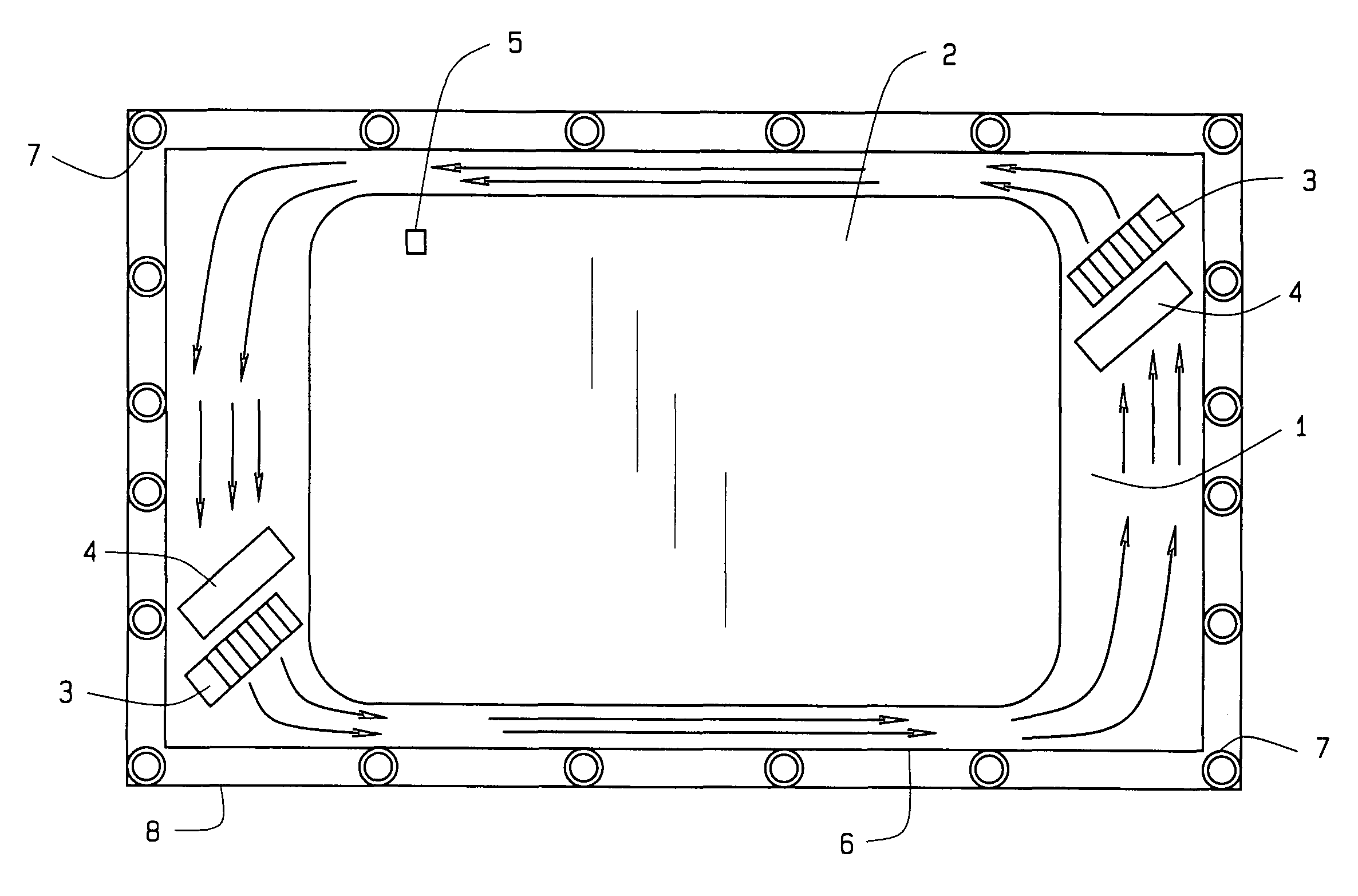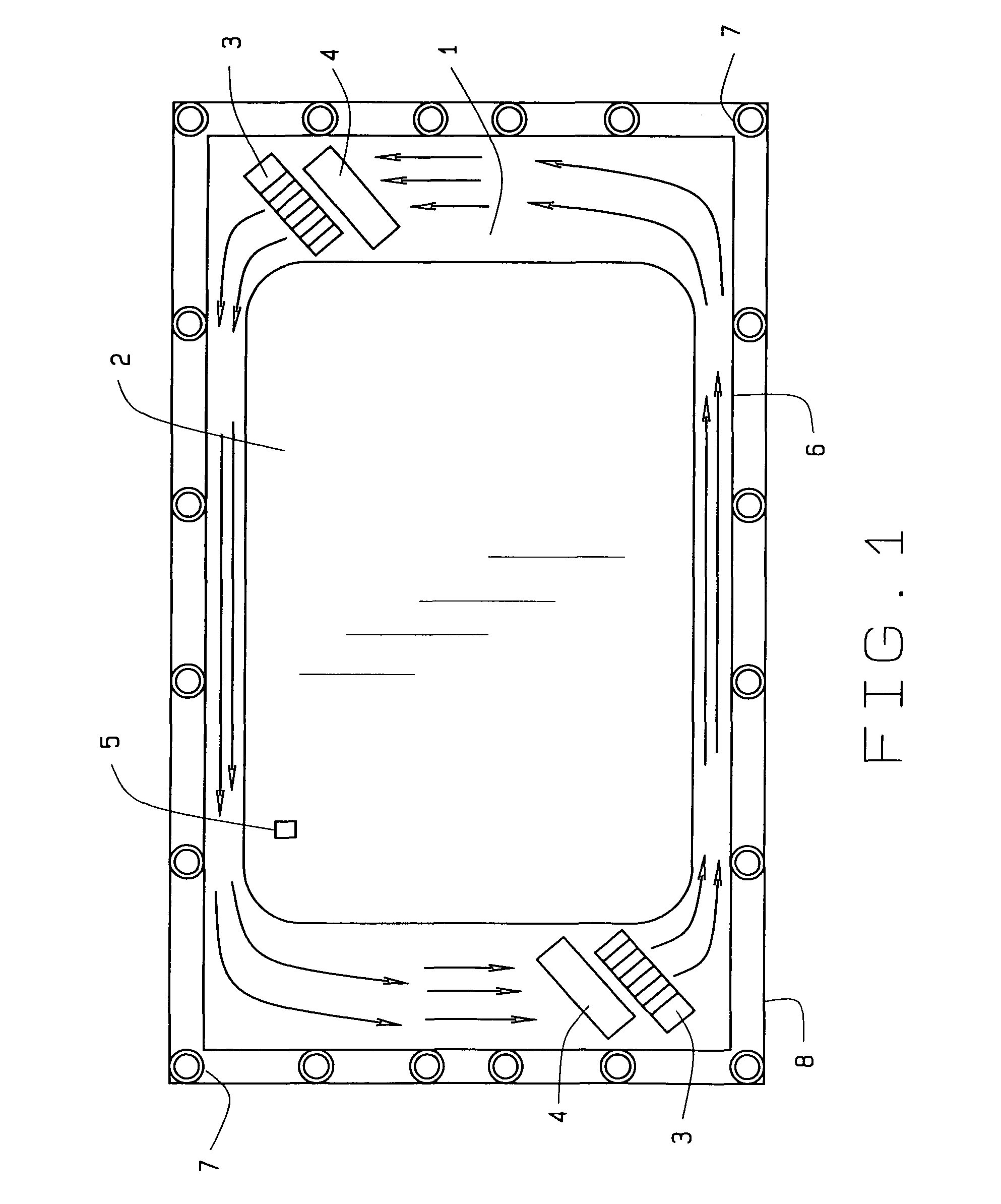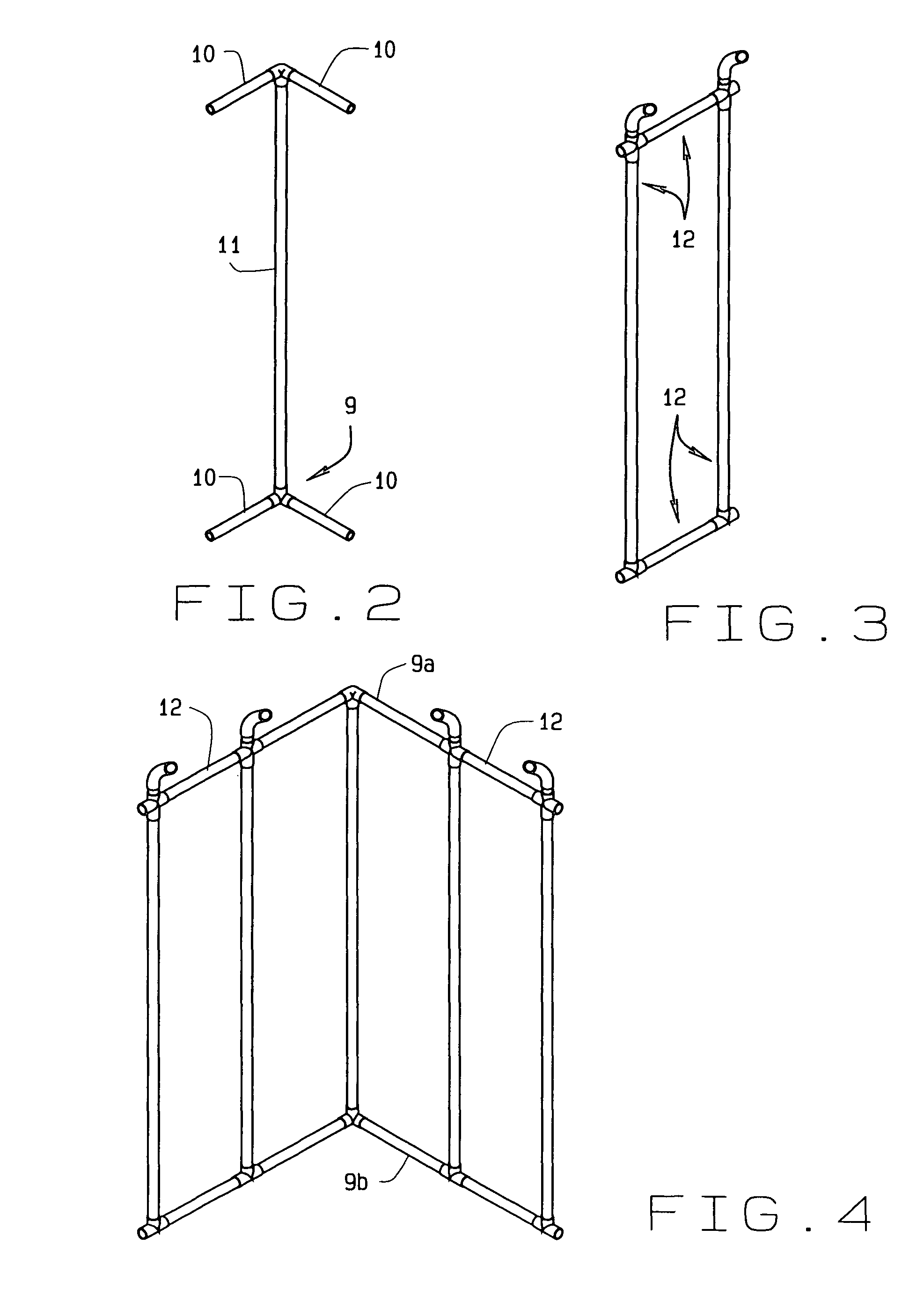Heat chamber for termination of bed bugs and other arthropods
a technology for killing bed bugs and other arthropods, applied in the field of killing insects, can solve problems such as difficult control, unfavorable customers, and the use of solar radiation as a heat source to kill bed bugs in encased mattresses, and achieve the effect of convenient assembly
- Summary
- Abstract
- Description
- Claims
- Application Information
AI Technical Summary
Benefits of technology
Problems solved by technology
Method used
Image
Examples
Embodiment Construction
[0056]Referring now to the drawings, FIG. 1 shows the components of an arthropod heating system which consists of 1 double reflective insulation floor cover, 2 arthropod infested building contents, such as a bed, 3 portable heaters, 4 portable fans, 5 thermocouples or thermometers, 6 double reflective insulating inner canopy, 7 non metallic support structure, 8 double reflective insulating outer canopy.
[0057]To construct the non-metallic support structure, FIG. 2, the corners 9 are formed by securing lateral poles 10 to corner poles 11. The side panel 12 consists of lateral rails and longitudinal rails assembled into a rectangle or square in FIG. 3. PVC or polycarbonate tubes may be used for these structures. The main corners 9b are assembled by connecting the corners 9 to the side panels 12 in FIG. 4. The support structure top 13 in FIG. 5 consists of four hinges connected to lateral and longitudinal rails or, the top may be solid and unhinged. In FIG. 6, the hinges are shown in th...
PUM
 Login to View More
Login to View More Abstract
Description
Claims
Application Information
 Login to View More
Login to View More - R&D
- Intellectual Property
- Life Sciences
- Materials
- Tech Scout
- Unparalleled Data Quality
- Higher Quality Content
- 60% Fewer Hallucinations
Browse by: Latest US Patents, China's latest patents, Technical Efficacy Thesaurus, Application Domain, Technology Topic, Popular Technical Reports.
© 2025 PatSnap. All rights reserved.Legal|Privacy policy|Modern Slavery Act Transparency Statement|Sitemap|About US| Contact US: help@patsnap.com



